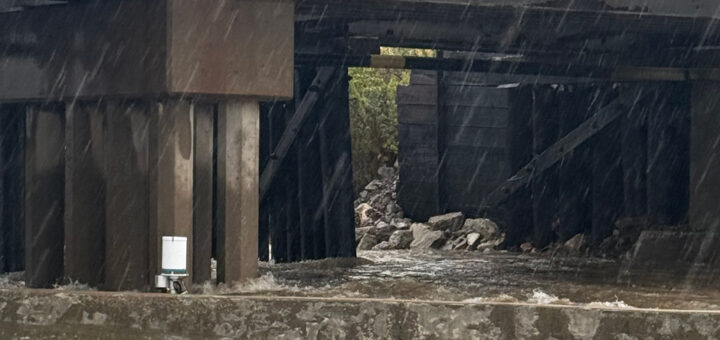Pavilion Lake Supports Space Exploration
0
Pavilion Lake. (Credit: Pavilion Lake Research Project)
To look for the origin of strange layered rock formations in Pavilion Lake, scientists have dived, sampled and monitored all along the Canadian waterbody.
In the process, they’ve learned more about its underwater environment and revealed clues that may explain the rocky towers that look something like stalagmites.

Microbialite towers in Pavilion Lake. (Credit: Donnie Reid via Wikimedia Commons)
Research findings from the lake, located in British Columbia, have been used to draw comparisons between existing aquatic life and life that existed on Earth millions of years ago.
But the lake has also served another purpose: preparing astronauts for space exploration.

NASA Astronaut Mike Gernhardt pilots a DeepWorker submersible to map the distribution of microbialites in Pavilion Lake. (Credit: Pavilion Lake Research Project)
According to the Geological Society of America, the environment provides a great place to study the lake while informing researchers about the risks of space exploration at the same time:
“Some analog programs such as the Pavilion Lake Research Project (PLRP) present the opportunity to investigate both real scientific and real exploration scenarios in tandem. The activities of this research program demand the use of techniques, tools, and strategies for underwater scientific exploration, and the challenges associated with the scientific exploration of Pavilion Lake are analogous to those human explorers will encounter on other planetary and small solar system bodies.”

Pavilion Lake research vessel being lowered into the water. (Credit: Ben Cowie)
As such, prominent astronauts have made their way through the research program, including Chris Hadfield, the first Canadian to walk in space and one-time commander of the International Space Station.
In recent times, researchers have shifted some of their focus to the nearby Kelly Lake, where many of the same submersible vehicles and monitoring equipment will delve into rock formations there. With the end of the shuttle program, NASA has adjusted by turning to its Earth-based missions.
From its beginning, the Pavilion Lake Research Project has been an international effort, aided by the expertise of NASA and the Canadian Space Agency.

Diver transports submersible UAV. (Credit: Pavilion Lake Research Project)
Featured Image: Scientists onboard a research vessel keep tabs on submersible operators in the mission control room. (Credit: Pavilion Lake Research Project)













